|
Can The Cans? Pros and Cons
In The Great Headphones Debate
Note: The author teaches voice over individually by phone and Skype, and through workshops in major Canadian cities. For details, please click here, or visit: www.micnme.com.
By Deb Munro
Voice Actor & Trainer
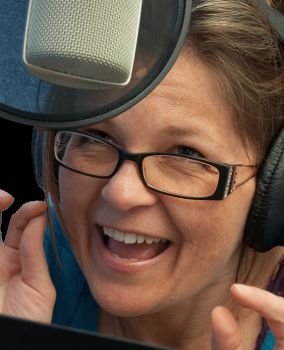 Who would think that headphones (otherwise known as "cans") could be a topic for controversy, but alas ... it seems to be so, and Iíd like to share with you my opinion on this great debate in hopes that it might help you choose what is right for you. Who would think that headphones (otherwise known as "cans") could be a topic for controversy, but alas ... it seems to be so, and Iíd like to share with you my opinion on this great debate in hopes that it might help you choose what is right for you. First, if youíre a home-based voice talent, headphones are completely your choice.
If you like using them, then use them. And if you prefer not to, then donít.
Itís really that simple.
STUDIOS DROPPING 'EM
However, if youíre a MAJOR MARKET talent or a talent who voices primarily in studios such as in Los Angeles, New York City, Vancouver or Toronto, you may have seen a significant change in the use of headphones in the local studios.
Many top studios are doing away with headphones for talent.
Most quality studios are equipped with talkback, so there is no need for the talent to wear the headphones when the client/director can speak with the talent directly through a speaker without affecting the recording.
WHAT'S YOUR EXPERIENCE?
If youíre an experienced talent, youíll have grown accustomed to a certain way of recording.
Many talent are used to recording from the old broadcast days, when hearing themselves through the headphones was either a necessity for technique or a way for them to hear that great voice of theirs.
Letís face it, weíre voice talent, we like to be heard.
... OR NOT?
Of course there is exception to this stereotype.
There are many forms of voice talent, including some who are very introverted and shy ... and perhaps are intimidated or put off by the sound of their own voice.
In fact, many people DONĒT like the sound of their voice and find it off-putting to hear their voice playing while they are speaking, or even played back, for that matter.
You have to get over that one, because that is EXACTLY how you sound to the rest of the world.
OVER ONE EAR
A technique that MANY use is to put one side of the headphones over one ear only, and the opposite side placed behind your ear, resting on your head.
That doesnít mean, however, that you have to wear the headphones and hear your voice back.
PROS AND CONS ...
There can be significant benefits to using headphones, just as there can be major drawbacks.
As with most things in this industry, it really does come down to personal choice, unless it's required to wear headphones in order to hear playback or direction.
Iíve created a list of pros and cons to wearing headphones in hopes that you can apply this to your needs. Let us know (comment below) if you have additions to these lists.
CAN THE CANS
Letís start with Cons:
Iím sure there are more, but this is a good start.
ALL IN FAVOR ... Now for the advantages to wearing headphones:
MY CHOICE IS ...
As you can see, there is cause for argument on both sides so it becomes personal choice and studio choice.
I have worked with headphones since the beginning of my career in 1989, so Iím more than comfortable working with them. In fact, I prefer to work with headphones.
I can work without them, but I do most of my projects from home and I tend to live a very busy workday so I donít have time for unnecessary redos and I find headphones save me a ton of time.
FOR EXAMPLE ...
I once sent an audiobook project to a client that both my myself and my engineer edited separately to meet a strict deadline. We both sent in our edited files to the client and the client came back saying he could hear our edit cuts.
We were taken back by his notes because we both have a great ear and use high quality monitor speakers. Plus, my studio is acoustically correct and fairly sound proof.
I decided to listen to the file with headphones (which is how people will be listening to an audiobook and many of the files you voice), and we were able to hear exactly what he was talking about.
HEAR FINAL FILE
This is a great way to hear how clean your finished product is, so I try to always listen to the final file with headphones on, to assure top quality sound.
When Iím in a studio that doesnít allow headphones, itís not a problem to perform without them, because the engineers will hear any unwanted noises and necessary redos.
I encourage you to practice both methods so that you are able to accommodate any needs the studios/clients/directors may have.
You must be adaptable - and thatís one thing that isnít debatable!
ABOUT DEB ...
Deb Munro is a leading voice talent, coach, and owner of Chanti Productions, in the Vancouver, B.C., Canada area. She offers private voice over coaching by phone and Skype, and MIC 'N ME workshops on voice acting, business and demo prep in many Canadian cities.
Email: deb@micnme.com
|
|
|
For essential voice-over business strategies
On Michael Langsner's Voice-Over Roadmap Podcast
Email alerts to new VoiceOverXtra articles
With Sean Daeley and Paul Stefano - check it out!
As of the NEW website launch, 03/22/2012




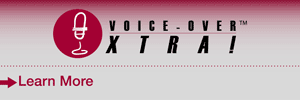
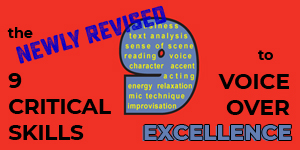

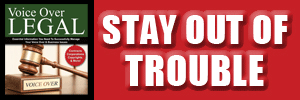
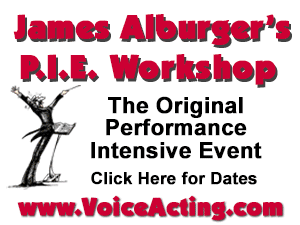
.png)
I know inside why I use the headphones for every recording and for editing, but just could not verbalize my reasoning. Thank you for giving me solid reasons, understandable (!) reasons I can give to him.
What should also be taken into consideration is the headphone themselves.
Sony 7506s are hyped in the high and low end. Many AKGs leak like crazy. Beyerdynamics might make you sound warmer than you are. I use Sennheiser HD280s, which are uncomfortable until you break them in for a week, then they're great. Amazing isolation, so you don't have to crank the gain. Audio Technica and Shure have new models of headphones that I would also recommend over the standard Sony and AKG models.
Whatever you have, enjoy what you've got!
Thank you for your very informative article. This reinforces my feeling that I need to listen to the work both on speakers and headphones before submission. I often use Bose q15 headphones so I can get down to real honest sound, though I also record without often.
I feel the best take-away, though, is the need to listen to your work on monitor and headphone.
Well writen.
I too, use the same Sony headphones ... except my ear cushions don't always stay on - pain in the arse .....
I think what we hear commonly is that those of us from JOCK ROCK days - taking off the Cans will help to offer a more natural read - we can also learn that wearing them too much is actually damaging to your ears. I too suffer slightly, but liveable ... so be careful everyone.
So glad you are enjoying the article - I know there are many forms of thought and really all of them are correct. So let the great debate continue - while we all do whatever the heck we want anyway LOL - until told otherwise
All my best
Deb
The headphones' ear cups must go over the hearing aid speakers, at the top of the ear, rather than over the ear canal opening.
And this can create a feedback squeal and other strange sounds or electronic distortions as the hearing aid reacts to the cup and whatever is in the headphones.
During playback: Yikes! Is that weird noise in the recording - or in my head?
For many years, in studios, I'd remove the hearing aids and ask the engineers to crank up the headphone volume to the max, so that I could communicate with the director.
Today, luckily, my new digital aids (by Phonak) don't squeal! But a couple months ago, the left aid suddenly developed a hum with the headphone. What gives? I dunno. But at least it's not in the recordings!
I have been through 3 phases of the cans or no cans debate. In the beginning, cans (of course to monitor on-air and as a young "announcer" it was self-indulging). Then, some years ago, I went naked with no cans with an understanding I could achieve a more natural delivery. Of late, I am back to cans for the simple reason explained above (pops, clicks, slurring).
But most importantly for "working" the mic. Close, far, etc. Also, using headphones, I have a much better shot at duplicating a sound if I need to re-cut. Very good article. Enjoyed the read.
1. I have tinnitus. No doubt from wearing headfones too much at too high of a volume! The longer I keep the cans on, the more I am assured the ringing in my ears will get louder hours later.
2. My biggest challenge is to NOT sound like a radio guy! And that's what cans do for me!
3. I, too, playback on quality speakers and can usually hear room noise, bad edits, mouth clicks, etc., through speakers.
But Deb is correct. There is no right or wrong answer. If you feel they help rather than hinder you ... use 'em! By the way, the fones of choice for me for years has been the Sony MDR-7506.
Not only whether to use cans ... I prefer not to. When I do, I become "Boss Jock" and there isn't much call for that read anymore. But I do believe in wearing cans while editing. Many a sloppy edit was repaired that way.
I prefer to record with headphones on, but I do have a tiny head and even with the headphones set at their smallest size, they are still a tad big for me, which means they get a little uncomfortable after a while. However, by the time the discomfort starts to set in, it's usually time to take a break anyway, so it often works out well.
I have recorded without headphones a few times, but I ALWAYS play back through them whilst listening to the finished product. I agree, you definitely can't hear the edits half as much through speakers and that's important to create a quality finished file.